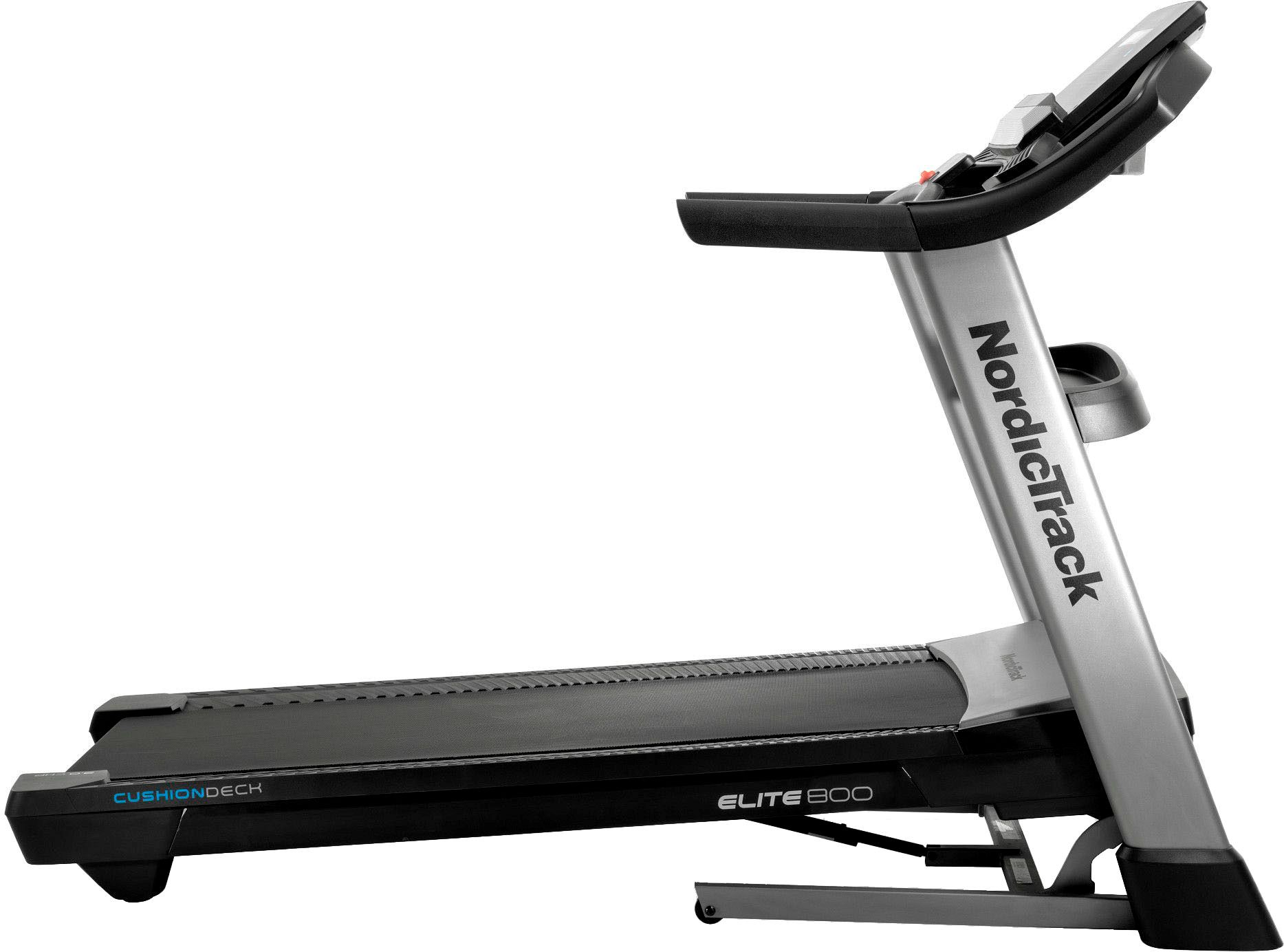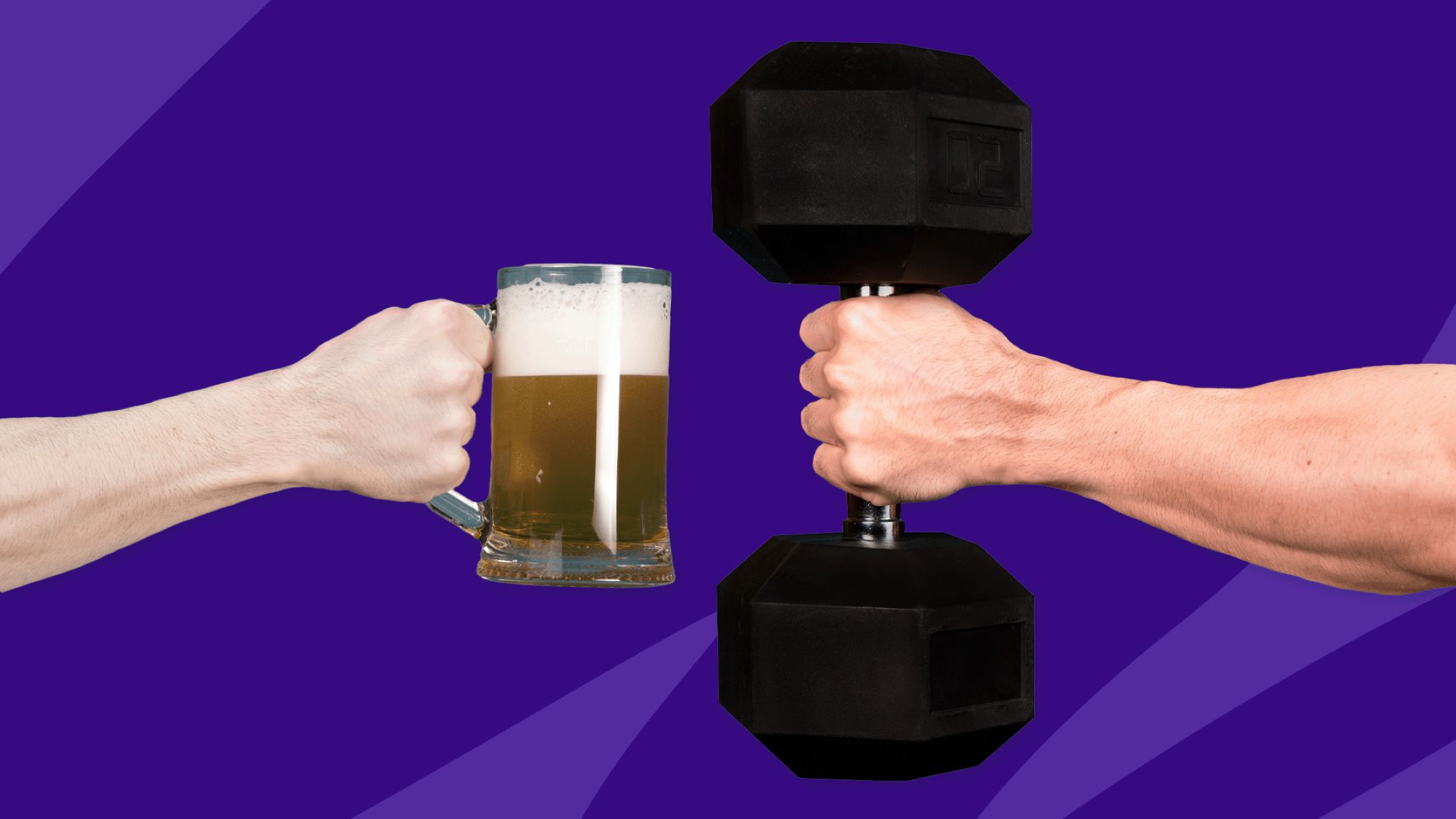

Featured
How To Know If Your Workout Is Effective
Modified: January 2, 2024
Learn how to determine if your workout is working with our featured article. Find out the key indicators of an effective workout and achieve your fitness goals.
Introduction
Welcome to the world of fitness! Whether you’re just starting your fitness journey or have been sweating it out for a while, it’s important to know if your workout is truly effective. After all, you want to make sure that all the time and effort you’re putting in is yielding the results you desire. But how do you determine if your workout is actually working? In this article, we’ll explore various indicators that can help you assess the effectiveness of your fitness routine.
Tracking your progress is crucial when it comes to gauging the effectiveness of your workouts. This can be done in a variety of ways. Keeping a workout log, for example, allows you to monitor your exercise routines, including the type of exercises performed, the intensity level, and the duration of each session. By regularly reviewing your log, you can identify any patterns or plateaus and make necessary adjustments to keep progressing.
Another important factor to consider is whether your workout aligns with your goals. Are you aiming to lose weight, build strength, increase flexibility, or enhance cardiovascular fitness? Understanding your objectives will help you customize your workout to target specific areas and track the progress accurately. Remember, what works for someone else may not necessarily work for you, so it’s important to tailor your routine to your unique needs.
Consistency and frequency are key. A sporadic workout routine is less likely to yield results compared to a consistent one. Aim to establish a regular exercise schedule, whether it’s three days a week or every day, and stick to it. This will allow your body to adapt and improve over time. Additionally, varying the intensity and types of exercises can keep your body challenged and prevent plateauing.
Proper technique and form are vital for both safety and effectiveness. Performing exercises with incorrect form can lead to injury and hinder progress. If you’re new to fitness, consider working with a personal trainer or fitness professional who can guide you through proper techniques. They can help you understand the correct form and alignment for different exercises, ensuring that you’re targeting the right muscles and maximizing results.
Tracking Your Progress
Tracking your progress is a crucial aspect of determining the effectiveness of your workout routine. It allows you to see how far you have come and identify areas where you can improve. There are various ways to track your progress, and finding the method that works best for you is essential.
One effective method is keeping a workout log. This involves recording the details of your workouts, including the exercises performed, the number of sets and repetitions, and the weights used. By logging your workouts, you can easily track your progress over time. You may notice that you’re able to lift heavier weights, complete more repetitions, or increase the duration of your sessions. This tangible evidence of progress can be incredibly motivating and help you stay on track.
In addition to a workout log, you can also take measurements of your body. This includes tracking your weight, body fat percentage, and measurements of specific body parts, such as your waist, hips, and arms. Keep in mind that the scale may not always be the most accurate representation of progress, as muscle gain can offset weight loss. By taking measurements, you can get a clearer picture of changes in your body composition and see progress that may not be reflected on the scale.
Another effective way to track your progress is by setting goals for yourself. These goals can be both short-term and long-term. For example, you may aim to increase the duration of your cardio sessions by 5 minutes within a month or be able to perform 10 consecutive push-ups within three months. Setting specific and measurable goals allows you to track your progress more objectively. As you achieve each goal, you can set new ones that challenge you further.
Furthermore, utilizing technology and fitness apps can also aid in tracking your progress. Many fitness apps offer features that enable you to input your workouts, track your steps, monitor your heart rate, and even provide personalized training programs. These apps can provide valuable insights into your progress and help you stay accountable to your fitness goals.
Remember, tracking your progress not only allows you to see how far you’ve come but also helps you identify areas where you may need to make adjustments or seek additional guidance. It’s important to approach tracking with a positive mindset and celebrate even the smallest wins along the way. By consistently monitoring your progress, you can continue to make informed choices and keep pushing towards your fitness goals.
Focusing on Your Goals
One of the key factors in determining the effectiveness of your workout routine is whether it aligns with your goals. Focusing on your goals ensures that you’re working towards specific outcomes and allows you to measure your progress more accurately.
Start by setting clear and realistic fitness goals. Whether you want to lose weight, build muscle, improve cardiovascular endurance, or enhance flexibility, defining your goals will give you a clear direction and purpose for your workouts. Make sure your goals are specific, measurable, attainable, relevant, and time-bound (SMART). For example, instead of setting a goal to “lose weight,” you could set a goal to “lose 10 pounds in three months by exercising three times a week and following a balanced diet.”
Once you have set your fitness goals, it’s important to structure your workouts accordingly. Tailor your exercises and training methods to best achieve the desired outcomes. For example, if your goal is to improve muscular strength, incorporate resistance training exercises such as weightlifting or bodyweight exercises into your routine. If you’re aiming to improve cardiovascular endurance, include activities like running, cycling, or swimming.
In addition to the types of exercises, the intensity and duration of your workouts also play a crucial role in achieving your goals. The American College of Sports Medicine recommends at least 150 minutes of moderate-intensity aerobic exercise or 75 minutes of vigorous aerobic exercise per week for overall health benefits. However, depending on your specific goals, you may need to adjust the intensity and duration of your workouts. Consult with a fitness professional or do research to determine the appropriate training guidelines for your objectives.
Furthermore, revisiting your goals periodically is essential to ensure that they still align with your current aspirations and progress. As you make progress towards your initial goals, you may find that new goals emerge or that you want to take your fitness journey in a different direction. Regularly assess and adjust your goals to remain motivated and focused on continued improvement.
Remember, focusing on your goals serves as a roadmap for your fitness journey. It helps you stay motivated, track your progress, and make necessary adjustments to your workout routine. By keeping your goals at the forefront of your mind, you can ensure that your workouts are purposeful and effective in helping you achieve the results you desire.
Consistency and Frequency
Consistency and frequency are crucial aspects when it comes to determining the effectiveness of your workout routine. A sporadic or haphazard approach to exercise is unlikely to yield the desired results. Instead, it’s important to establish a consistent and regular workout schedule.
Consistency refers to sticking to your workout routine over an extended period of time. It’s about making exercise a non-negotiable part of your daily or weekly routine, much like brushing your teeth or eating meals. Consistency allows your body to adapt and improve gradually over time, leading to long-term results. Skipping workouts or being inconsistent in your efforts can disrupt this process and impede progress.
Frequency is the number of times you engage in physical activity within a given time period. The American College of Sports Medicine recommends at least 150 minutes of moderate-intensity aerobic exercise or 75 minutes of vigorous aerobic exercise per week for general health benefits. However, the frequency of your workouts may vary depending on your goals and fitness level.
When determining the frequency of your workouts, it’s important to consider both your ability and availability. If you’re new to exercise or have a busy schedule, starting with two or three workouts per week may be more realistic. As you progress and become more comfortable, you can gradually increase the frequency to reach your desired level.
Consistency and frequency work hand in hand to promote progress and results. By maintaining a consistent workout schedule and engaging in physical activity regularly, you provide your body with the stimulus it needs to adapt and improve. Consistency also helps to establish good habits and discipline, making exercise a natural part of your lifestyle.
Additionally, varying the intensity and types of exercises can help to keep your body challenged and prevent plateauing. If you constantly perform the same workouts at the same intensity, your body may adapt to the routine, resulting in diminished results over time. Incorporate different forms of exercise, such as strength training, cardio, and flexibility exercises, to target different muscle groups and keep your workouts interesting.
Ultimately, consistency and frequency are the keys to making progress and achieving your goals. Aim to establish a regular exercise routine that suits your schedule and gradually increase the frequency as your fitness level improves. By prioritizing consistency and making exercise a consistent part of your lifestyle, you’ll be setting yourself up for success in achieving your desired fitness outcomes.
Proper Technique and Form
When it comes to working out, proper technique and form are essential for both safety and effectiveness. Performing exercises with incorrect form not only increases the risk of injury but also hinders your progress and limits the benefits you can derive from each exercise.
First and foremost, if you’re new to fitness or unfamiliar with specific exercises, it’s highly recommended to seek guidance from a qualified fitness professional. Working with a personal trainer, attending group fitness classes, or consulting reputable online resources can help you learn the correct technique and form for different exercises.
Proper technique involves understanding and executing the movements in a way that targets the intended muscles and minimizes strain on other parts of the body. This includes maintaining proper body alignment, engaging the appropriate muscles, and executing controlled movements throughout the exercise.
For example, in a squat, proper technique involves keeping your feet shoulder-width apart, bending your knees and hips while maintaining a straight back, and lowering your body until your thighs are parallel to the ground. Conversely, incorrect technique might include rounding your back, allowing your knees to collapse inward, or shifting the weight to your toes.
In addition to avoiding injury, proper technique and form also ensure that you’re getting the most out of each exercise. By performing exercises with correct form, you’re able to target the specific muscles you intend to work, leading to better results and improvements in strength, endurance, and overall fitness.
Another important aspect of proper technique and form is breathing correctly during your workouts. Proper breathing technique helps stabilize your core, maintain proper form, and ensure sufficient oxygen supply to your muscles. Generally, exhaling during the exertion phase (the most challenging part of the exercise) and inhaling during the relaxation phase is recommended.
Remember, it’s not about how much weight you can lift or how many repetitions you can do if your form is compromised. Prioritize quality over quantity, and focus on executing each exercise with proper form and technique. Gradually increase the intensity or weight as you become more proficient and confident in your form.
Pay attention to any cues or feedback from your body. If you experience pain or discomfort during an exercise, it may indicate that your form needs adjustment. Don’t push through pain, as it could lead to injury. Instead, stop and reassess your form or seek guidance from a professional.
In summary, proper technique and form are fundamental in any workout routine. Seek guidance, learn the correct form for each exercise, and prioritize executing movements with precision and control. By paying attention to proper technique and form, you’ll not only reduce the risk of injury but also maximize the effectiveness of your workouts, leading to better results and progress towards your fitness goals.
Challenging Your Body
For your workout routine to be effective, it’s important to constantly challenge your body. Regularly pushing your limits and introducing new challenges can help you break through plateaus, prevent boredom, and continue making progress towards your fitness goals.
One way to challenge your body is by increasing the resistance or weight you use during strength training exercises. Gradually increasing the load stimulates your muscles and forces them to adapt, leading to increased strength and muscle growth. However, it’s important to do this gradually to avoid injury. Proper form and technique should always take precedence over the amount of weight lifted.
Another way to challenge your body is by varying your workout routine. This can include trying new exercises, changing the order of your exercises, or incorporating different training methods. For example, if you typically do steady-state running on a treadmill, try incorporating interval training or switching to outdoor running to challenge your cardiovascular fitness in different ways.
In addition to varying your routine, implementing progressive overload can help challenge your body. Progressive overload refers to continually increasing the demands placed on your body over time. This can be done by increasing the intensity, duration, or frequency of your workouts. For example, if you’re able to comfortably run for 30 minutes, challenge yourself to increase the duration to 35 minutes or increase the intensity by running at a faster pace.
Cross-training is another effective way to challenge your body. By participating in a variety of physical activities, you engage different muscle groups, improve overall fitness, and keep your workouts fresh and exciting. Consider adding activities such as swimming, cycling, yoga, or HIIT workouts into your routine to diversify your training and challenge your body in new ways.
Listening to your body is crucial when it comes to challenging yourself appropriately. Pushing your limits is important, but it’s equally important to recognize when you need to rest or recover. Overtraining can lead to increased risk of injury, fatigue, and hindered progress. Be attentive to your body’s cues and give yourself adequate rest days to allow for recovery.
Lastly, setting goals and tracking your progress can also help you challenge yourself effectively. By setting specific and measurable goals, you can create targets to strive for and maintain motivation. Regularly reviewing and adjusting your goals allows you to consistently challenge yourself and keep your workouts engaging.
Remember, challenging your body is an ongoing process. Continually seek opportunities to push your limits, introduce new challenges, and assess your progress. By doing so, you’ll keep your workouts exciting, break through plateaus, and pave the way for continued growth and improvement.
Monitoring Your Heart Rate
Monitoring your heart rate is an effective way to gauge the intensity and effectiveness of your workouts. Your heart rate provides valuable information about how hard your heart is working and can help you optimize your training for maximum results.
There are several methods for monitoring your heart rate during exercise. The most common and accessible way is to check your pulse manually. You can do this by placing two fingers (usually the index and middle fingers) on the pulse points, such as the wrist or neck, and counting the number of beats for a specified duration, such as 15 seconds, and then multiplying that number by four to get your beats per minute (BPM).
Another option is using a heart rate monitor, either a chest strap or a wrist-worn device. These devices provide real-time heart rate data and can be especially useful during cardiovascular activities. Some heart rate monitors also sync with fitness apps or smartwatches, allowing you to track your heart rate over time and analyze your workout data.
Knowing your target heart rate zone is essential for effective monitoring. The target heart rate zone is the range of heartbeats per minute at which you should aim to exercise to achieve specific fitness goals. The American Heart Association recommends exercising in the moderate-intensity range, which is generally between 50-70% of your maximum heart rate. However, it’s important to consult with a healthcare professional to determine the appropriate target heart rate zone based on your age, fitness level, and any pre-existing health conditions.
Monitoring your heart rate during workouts enables you to adjust the intensity to stay within your target heart rate zone. If your heart rate is too high, it may indicate that you’re pushing too hard, and you may need to dial back the intensity or take a break. Conversely, if your heart rate is below the target zone, you can increase the intensity to challenge yourself further.
In addition to monitoring your heart rate during workouts, it’s also beneficial to track your resting heart rate. Resting heart rate is the number of times your heart beats per minute while at complete rest. It’s an indicator of your cardiovascular fitness, and a lower resting heart rate generally indicates better fitness levels. Regularly tracking your resting heart rate can help you assess your overall fitness and track improvements over time.
Keep in mind that heart rate monitoring is just one tool in evaluating the effectiveness of your workouts. It’s important to consider other factors such as perceived exertion, energy levels, and performance improvements. Heart rate monitoring should be used in conjunction with other indicators to gain a comprehensive understanding of your workouts and their impact on your fitness goals.
By monitoring your heart rate, you can ensure that you’re exercising at the appropriate intensity for your goals, thus optimizing the effectiveness of your workouts. Whether you choose to manually check your pulse or use a heart rate monitor, this information can guide your training and help you make informed decisions to achieve the desired outcomes.
Listening to Your Body
Listening to your body is a crucial aspect of any effective workout routine. Your body is incredibly intuitive and provides valuable feedback that can guide your fitness journey and help you optimize your workouts.
One way to listen to your body is by paying attention to how you feel during and after exercise. Take note of any discomfort, pain, or unusual sensations. If you experience sharp or intense pain, it’s essential to stop and assess the situation. Pain can be an indication of an injury or overexertion, and continuing to exercise in such circumstances can result in further harm.
On the other hand, understanding the difference between muscle fatigue and discomfort can help you push through challenging workouts. It’s normal to feel tired or fatigued during intense exercise sessions, but pushing yourself to go a little further can lead to progress and improved fitness levels. Learning to differentiate between discomfort that is a normal part of pushing your limits and pain that is a warning sign is essential for avoiding injury.
Another important aspect of listening to your body is recognizing the importance of rest and recovery. Rest days are just as crucial as your workout days. Overtraining without sufficient rest can lead to fatigue, decreased performance, and an increased risk of injury. Your body needs time to recover and repair itself after intense workouts. Signs that you may need more rest include persistent muscle soreness, decreased motivation, irritability, and a decline in performance. Tuning in to these signals and prioritizing rest and recovery will ultimately benefit your long-term progress and overall well-being.
Monitoring your energy levels can also provide valuable insight into the effectiveness of your workouts. If you consistently feel drained and low on energy, it may indicate that your exercise routine is too demanding or imbalanced. Adjusting the intensity, duration, or frequency of your workouts can help restore your energy levels and ensure that your body is adequately fueled for exercise.
Furthermore, being aware of your mental and emotional state during workouts is essential. Exercise is not just physical, but also has a profound impact on mental and emotional well-being. Pay attention to how you feel mentally and emotionally during and after exercise. If you find that a particular workout or exercise brings you joy, boosts your mood, and makes you feel mentally stronger, it’s a good indicator that it’s effective for you. Conversely, if an exercise consistently drains your motivation or negatively impacts your mental health, it might be worth exploring alternative activities.
Ultimately, listening to your body is about developing a deeper connection and understanding of yourself. Pay attention to the signals and feedback your body provides, and use that information to make informed decisions about your workouts. Be flexible and willing to adapt your routine based on what your body is telling you. By doing so, you can tailor your workouts to meet your needs, optimize the effectiveness of your exercise routine, and promote overall physical and mental well-being.
Assessing Your Energy Levels
Assessing your energy levels is a critical aspect of understanding the effectiveness of your workout routine. Your energy levels directly impact your performance, motivation, and overall experience during exercise. By assessing your energy levels, you can make informed decisions about when to push harder, take it easy, or adjust your workouts accordingly.
One way to assess your energy levels is by tuning in to how you feel before and after a workout. Pay attention to your overall energy level, mood, and motivation. If you consistently feel sluggish, fatigued, or lack the enthusiasm to exercise, it may indicate that your energy levels are low. On the other hand, if you feel energized, mentally focused, and ready to take on physical challenges, it suggests that your energy levels are optimal.
It’s important to note that energy fluctuations are normal and can be influenced by various factors, such as sleep quality, stress levels, nutrition, and overall health. Understanding the relationship between these factors and your energy levels can help you better plan and adjust your workouts accordingly.
Assessing your energy levels also involves listening to your body’s signals during exercise. Pay attention to how your body responds to the intensity and duration of your workouts. If you feel consistently depleted and exhausted during or after a workout, it may be a sign that you need to modify your routine. This could mean adjusting the intensity, shortening the duration, or incorporating more rest and recovery days into your schedule.
Furthermore, consider the timing of your workouts in relation to your energy levels. Some people find that they have higher energy levels in the morning, while others may feel more energized in the afternoon or evening. Experiment with different workout times to determine when you feel most energized and perform at your best. Aligning your workout schedule with your natural energy patterns can result in more productive and enjoyable workouts.
Consistently low energy levels can also be an indication of underlying issues such as inadequate sleep, poor nutrition, or excessive stress. Assess these areas of your life to identify any potential contributors to low energy levels. Ensuring that you’re getting enough quality sleep, nourishing your body with a balanced diet, and managing stress levels can significantly impact your energy levels and overall well-being.
Developing a routine of self-care and incorporating activities that help boost your energy levels, such as yoga, meditation, or engaging in hobbies you enjoy, can also provide a natural energy boost. Additionally, paying attention to hydration and fueling your body with the right nutrients before and after workouts can enhance your energy levels and optimize your performance.
Remember, assessing your energy levels is not about pushing yourself to the limit every time you exercise. It’s about finding a balance between challenging yourself and respecting your body’s needs. By understanding and responding to your energy levels, you can make the necessary adjustments to your workout routine and ensure that your exercises are effective and aligned with your energy resources.
Measuring Strength and Endurance
Measuring your strength and endurance is a valuable way to assess the effectiveness of your workout routine. Strength and endurance are key components of overall fitness, and tracking your progress in these areas can help you understand how your body is adapting and improving over time.
One way to measure strength is by tracking your ability to lift weights or perform specific exercises. This can be done by recording the amount of weight you can lift for various exercises, such as barbell squats, deadlifts, or bench presses. Keeping a record of your strength gains allows you to see tangible improvements and progress. You may find that you can lift heavier weights, complete more repetitions, or perform more advanced variations of exercises as you get stronger.
Another method to measure strength is through bodyweight exercises. These exercises use your own body as resistance and are a good indicator of relative strength. For example, tracking the number of push-ups, pull-ups, or squats you can do in a set amount of time can provide insight into your upper body, core, and lower body strength.
In addition to strength, measuring endurance is crucial for assessing the effectiveness of your workouts. Endurance refers to the ability of your muscles to sustain activity over an extended period of time. One common way to measure endurance is by tracking the distance or duration of cardiovascular activities, such as running, cycling, or swimming. As your endurance improves, you may be able to run longer distances, cycle for more extended periods, or swim more laps without feeling fatigued.
Monitoring your heart rate during cardio exercises can also provide information about your endurance. By noting your heart rate at different intensities or different points during your workouts, you can track how your ability to sustain physical activity improves over time. For example, you may notice that your heart rate drops more quickly during recovery periods or that it takes longer for your heart rate to reach a certain level during strenuous exercise.
When measuring strength and endurance, it’s important to consider both your relative progress and your personal goals. Everyone’s starting point and capabilities are different, so focus on your own growth rather than comparing yourself to others. Set realistic goals that challenge you but are attainable based on your current fitness level.
Regularly reassessing your strength and endurance allows you to identify areas of improvement and make adjustments to your training program. If you find that you have reached a plateau in either strength or endurance, it may be time to introduce new exercises, increase the intensity, or incorporate different training methods to continue challenging your body.
Remember, measuring your strength and endurance requires consistency, patience, and a focus on gradual progress. Celebrate each milestone and use the data you collect as motivation to keep striving for improvement. By monitoring and tracking your strength and endurance, you can ensure that your workouts are effective in helping you achieve your fitness goals.
Quality of Sleep and Recovery
The quality of your sleep and the effectiveness of your recovery are crucial factors in determining the overall effectiveness of your workout routine. Sleep and recovery play a significant role in muscle repair, energy restoration, and overall physical and mental well-being.
Getting adequate and quality sleep is essential for optimal performance and recovery. During sleep, your body goes through various stages of restorative processes, including muscle repair and growth, hormone regulation, and memory consolidation. Lack of sleep or poor quality sleep can negatively impact your exercise performance, recovery, and overall health.
One way to assess the quality of your sleep is by tracking your sleep duration and noting any disturbances. Aim for seven to nine hours of uninterrupted sleep per night, as recommended by the National Sleep Foundation. Lack of sleep may lead to increased fatigue, decreased cognitive function, and a compromised ability to perform at your best during workouts.
Additionally, paying attention to the quality of your sleep is important. Factors that can affect sleep quality include the darkness and temperature of your sleep environment, noise levels, and the comfort of your mattress and pillows. Creating a conducive sleep environment and practicing good sleep hygiene, such as establishing a consistent bedtime routine and avoiding stimulating activities before bed, can contribute to better sleep quality.
Recovery goes beyond just sleep and includes activities and practices that promote rest, repair, and rejuvenation of the body. It’s crucial to allow your body sufficient time to recover and rebuild after intense workouts by incorporating rest days and active recovery sessions into your routine.
Active recovery involves engaging in low-intensity exercises such as yoga, stretching, or light cardio to promote blood circulation, reduce muscle soreness, and aid in the recovery process. By incorporating active recovery days into your routine, you provide your body with the opportunity to repair and recharge without completely stopping physical activity.
Additionally, paying attention to your nutrition and hydration is vital for effective recovery. Consuming a balanced diet that includes quality proteins, carbohydrates, and healthy fats helps replenish energy stores and provides the nutrients necessary for muscle repair and growth.
Hydration is equally important as water supports various bodily functions and aids in the recovery process. Drinking enough water throughout the day, especially during and after workouts, helps prevent dehydration, enhances nutrient absorption, and promotes optimal recovery.
Listening to your body and recognizing signs of overtraining or burnout is crucial for effective recovery. Pushing yourself too hard without allowing for sufficient rest and recovery time can lead to fatigue, decreased performance, and increased risk of injury. In such cases, it’s important to prioritize rest, adjust your workout intensity or duration, or even take extended breaks when needed.
Remember, quality sleep and effective recovery are just as important as the actual exercise itself. Strive for consistent and restful sleep, incorporate active recovery sessions, prioritize proper nutrition and hydration, and be mindful of your body’s signals. By giving your body the rest and recovery it needs, you’ll enhance the effectiveness of your workouts and promote better overall health and well-being.
Mental and Emotional Benefits
When evaluating the effectiveness of your workout routine, it’s important to consider the mental and emotional benefits that exercise brings. Regular physical activity goes beyond physical fitness – it has a profound impact on mental well-being and emotional health.
Exercise has been shown to be a powerful mood booster. Engaging in physical activity releases endorphins, which are natural chemicals in the brain that promote a sense of happiness and well-being. Whether it’s going for a run, attending a fitness class, or participating in a team sport, exercise can help alleviate symptoms of stress, anxiety, and even depression.
Additionally, physical activity can enhance cognitive function and improve mental clarity. Studies have shown that exercise increases blood flow to the brain, which can enhance memory, attention, and overall cognitive performance. Regular exercise has also been associated with a reduced risk of cognitive decline and an improved ability to handle stress and pressure.
Exercise provides an outlet to release built-up tension and stress. It allows you to channel your energy into something productive and divert your focus away from daily worries and concerns. Engaging in physical activity can help clear your mind, improve your ability to concentrate, and provide a sense of release and relaxation.
Participating in group exercise classes or team sports can also provide social interaction and a sense of community. Connecting with others who have similar fitness goals or interests can foster a sense of belonging and camaraderie. The social aspect of exercise can help combat feelings of isolation or loneliness, promoting overall emotional well-being.
Setting and achieving fitness goals can boost self-confidence and self-esteem. Seeing progress and improvement in your physical abilities can translate to other areas of your life, giving you a sense of empowerment and accomplishment. Additionally, exercise can improve body image perception, promoting a more positive and healthy relationship with your body and self-image.
Moreover, the routine and structure that comes with a regular exercise regimen can provide a sense of stability and control in your life. Establishing a workout routine and sticking to it can create a sense of purpose and discipline, which can positively impact your mental and emotional well-being.
It’s important to note that while exercise can be an effective tool for managing mental and emotional well-being, it is not a substitute for professional help. If you’re struggling with severe or persistent mental health concerns, it’s important to reach out to a qualified healthcare professional for guidance and support.
In summary, the mental and emotional benefits of exercise are just as important as the physical benefits. Regular physical activity can boost mood, enhance cognitive function, relieve stress, foster social connections, improve self-confidence, and provide a sense of purpose and control. By considering these mental and emotional benefits, you can assess the overall effectiveness of your workout routine and recognize the positive impact it has on your holistic well-being.
Conclusion
Assessing the effectiveness of your workout routine is essential in order to make informed decisions and optimize your fitness journey. By tracking various indicators and paying attention to key factors, you can ensure that your workouts are efficient, safe, and tailored to your goals and needs.
Tracking your progress through workout logs, measurements, and goal setting allows you to see tangible improvements over time. It provides valuable insights into areas where you may need to make adjustments or seek further guidance.
Focusing on your goals ensures that your workouts are purposeful and aligned with your desired outcomes. Customizing your routine according to your objectives empowers you to target specific areas and track your progress accurately.
Consistency and frequency are key components of an effective workout routine. By establishing a regular exercise schedule and varying the intensity, type, and duration of your workouts, you can challenge your body and prevent plateaus.
Proper technique and form are crucial for safety and effectiveness. Understanding and executing exercises with correct form target specific muscles and maximize results. Seeking guidance from professionals and paying attention to breathing and body alignment are essential for maintaining proper technique.
Monitoring your heart rate, listening to your body, and assessing your energy levels help you determine the appropriate intensity and duration of your workouts. They guide you in making necessary adjustments, ensuring that your exercises are effective and sustainable.
Measuring your strength and endurance provides concrete evidence of progress and allows you to set realistic goals. By regularly assessing your abilities and seeking gradual improvements, you can continue challenging your body and making strides towards your goals.
Paying attention to the quality of your sleep, prioritizing recovery, and recognizing the mental and emotional benefits of exercise are vital for your overall well-being. Incorporating rest days, adequate sleep, and self-care activities support optimal performance, mood, and mental clarity.
In conclusion, evaluating the effectiveness of your workout routine involves a holistic approach that encompasses various factors. By considering these indicators and continuously assessing and adjusting your approach, you can make the most of your fitness journey, achieve your goals, and maintain a healthy and active lifestyle.









